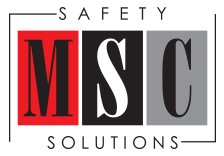OSHA Issues Final Rule Allowing Union Walkthroughs of Union and Non-Union Worksites: Understanding Your Rights
The Occupational Safety and Health Administration (OSHA) has recently finalized a rule that significantly impacts both unionized and non-unionized workplaces across the United States. As of April 1, 2024, this rule permits union representatives to accompany OSHA inspectors during safety walkthroughs at any worksite, regardless of the site’s union status. This development marks a pivotal change in the enforcement of workplace safety standards, aiming to enhance worker protection through collaborative oversight.
Overview of the New Rule
Historically, OSHA has allowed union representatives to participate in inspections primarily at unionized facilities where the union had bargaining rights. The new rule extends this right to non-unionized workplaces, permitting a union representative authorized by the workers to join OSHA inspections. The rationale provided by OSHA hinges on the belief that experienced union representatives can contribute valuable expertise and insight into potential safety issues, thus fostering a safer work environment.
Implications for Employers
For employers, particularly those at non-union sites, this rule introduces new dynamics in handling OSHA inspections:
- Preparation and Policy Review:
Employers should review their current safety policies and procedures to ensure they meet or exceed OSHA standards. Adequate preparation for an OSHA inspection, including having knowledgeable staff ready to interact with inspectors and union representatives, is crucial.
- Understanding of Rights:
Employers retain the right to contest the designation of a union representative in non-unionized settings. It’s important to understand the criteria under which OSHA permits outsider participation in an inspection and the circumstances under which an employer might challenge this participation.
- Communication with Employees:
Clear communication with employees about their rights and the inspection process is vital. Employees should understand who the union representatives are, the role they will play during inspections, and the scope of their authority.
Implications for Workers
The rule is designed to empower workers, providing them with greater representation during inspections, which can potentially lead to more thorough and effective enforcement of safety standards.
- Enhanced Safety Oversight:
The presence of union representatives, who typically possess detailed knowledge of industry-specific safety concerns, is likely to enhance the scrutiny of workplace conditions, potentially leading to more substantive safety improvements.
- Worker Advocacy:
Union representatives can serve as advocates for workers, voicing concerns that employees may feel hesitant to express directly to OSHA inspectors or employers.
- Educational Benefits:
Workers can gain insights into safety standards and violations identified during inspections, which in turn can foster a culture of safety and compliance at the workplace.
Legal and Practical Considerations
The introduction of this rule has sparked debates concerning its legal validity and practical implications. Legal challenges may arise, particularly from employers who view this policy as an overreach of OSHA’s statutory authority. These challenges may focus on issues of administrative law, such as the rule’s adherence to the Administrative Procedure Act and its consistency with broader federal labor regulations.
Conclusion
OSHA’s new rule on union walkthroughs at union and non-union worksites is a landmark shift in its inspection policy. This rule potentially enhances workplace safety by incorporating the expertise of union representatives in safety inspections, irrespective of the union status of the workplace. Both employers and employees must understand their rights and responsibilities under this new regulatory framework to fully leverage its benefits and navigate its challenges. Employers, in particular, should prepare for this change through diligent review and adaptation of their current safety practices and policies.
As this rule begins to take effect, all parties involved would benefit from staying informed about legal interpretations and practical applications of the rule, ensuring that they not only comply with the letter of the law but also contribute to a safer and more compliant work environment. MSC Safety Solutions is dedicated to providing you with the latest updates and guidance on navigating these and other regulatory changes effectively and efficiently.
Tim Gauna







